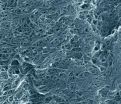(Press-News.org) In a discovery that may help speed use of "cell therapy" — with normal cells or stem cells infused into the body to treat disease — scientists are reporting development of a way to deliver therapeutic human cells to diseased areas within the body using a simple magnetic effect. Their report appears in ACS' journal Langmuir.
Rawil Fakhrullin and colleagues explain that cell therapy aims to replace damaged or diseased cells in the human body with normal cells or stem cells. To do so, medical personnel need a way to target these cells to diseased organs or tissues. So-called superparamagnetic iron oxide nanoparticles (SPIONs), attached to therapeutic cells, show promise. Magnetic devices could be used to move such cells to diseased areas of the body. But current ways of attaching SPIONs to therapeutic cells are difficult to use and may damage the therapeutic cells. So the researchers set out to develop a better process for attaching SPIONs to human cells.
They describe a new process for making "stabilized" SPIONs in the laboratory and successful attachment of these magnetic nanoparticles to the outside of human cells. They found that the SPIONs were not toxic to cells, and they moved in response to a magnet. "Our current results, as we believe, will inspire scientists to apply the simple and direct technique reported here in tissue engineering and cell-based therapies," say the researchers.
###The American Chemical Society is a non-profit organization chartered by the U.S. Congress. With more than 163,000 members, ACS is the world's largest scientific society and a global leader in providing access to chemistry-related research through its multiple databases, peer-reviewed journals and scientific conferences. Its main offices are in Washington, D.C., and Columbus, Ohio.
To automatically receive news releases from the American Chemical Society contact newsroom@acs.org.
New process could advance use of healthy cells or stem cells to treat disease
2011-12-22
ELSE PRESS RELEASES FROM THIS DATE:
Home washing machines: Source of potentially harmful ocean 'microplastic' pollution
2011-12-22
WASHINGTON -- The latest episode in the American Chemical Society's (ACS) award-winning "Global Challenges/Chemistry Solutions" podcast series discusses the discovery that household washing machines seem to be a major source of so-called "microplastic" pollution -- bits of polyester and acrylic smaller than the head of a pin -- that researchers now have detected on ocean shorelines worldwide.
In the podcast, Mark Anthony Browne, Ph.D., explains that the accumulation of microplastic debris in marine environments has raised health and safety concerns. The bits of plastic ...
New method of infant pain assessment from Oxford published in JoVE
2011-12-22
Recently, the accuracy of current methods of pain assessment in babies have been called into question. New research from London-area hospitals and the University of Oxford measures brain activity in infants to better understand their pain response.
As every parent knows, interpreting what a baby is feeling is often incredibly difficult. Currently, pain in infants is assessed using the premature infant pain profile (PIPP), which is based on behavioral and physiological body reactions, such as crying and facial expression. Though this is a useful measure, it is largely ...
NIST sensor improvement brings analysis method into mainstream
2011-12-22
An advance in sensor design* by researchers at the National Institute of Standards and Technology (NIST) and the University of Waterloo's Institute of Quantum Computing (IQC) could unshackle a powerful, yet high-maintenance technique for exploring materials. The achievement could expand the technique—called neutron interferometry—from a test of quantum mechanics to a tool for industry as well.
[Watch a short YoutTube video on this work at http://youtu.be/A21iXn2NL-8 ]
Neutron beams can be used in dozens of ways to probe complex molecules and other advanced materials, ...
Positive feedback and tumorigenesis
2011-12-22
Cancer cells are essentially immortal. The acquisition of an unlimited capacity to divide – the process of immortalization - is a central event in the genesis of tumors. Normally, cells are subject to stringent mechanisms which control their proliferation. Together these ensure that pre-malignant cells are induced to enter a senescent, non-dividing state or to undergo apoptosis, i.e. commit suicide. A research team led by Professor Heiko Hermeking and Dr. Antje Menssen from LMU's Institute of Pathology has now discovered how the regulatory protein c-MYC subverts these controls, ...
Prototype NIST device measures absolute optical power in fiber at nanowatt levels
2011-12-22
Researchers at the National Institute of Standards and Technology (NIST) have demonstrated a prototype device capable of absolute measurements of optical power delivered through an optical fiber.
The device is the world's first fiber-coupled cryogenic radiometer that links optical fiber power measurements directly to fundamental electrical units and national standards. It uses a microscopic forest of carbon nanotubes—the world's darkest material—to measure values that are about one-thousandth of the levels typically attained with a cryogenic radiometer lacking direct ...
Ellis & Salazar Leads Charitable Effort for a Decade
2011-12-22
December 15, 2011 marked Ellis & Salazar's 10 year anniversary leading an annual charitable effort for Child, Inc.'s Responsible Parenting Initiative. Since the program's inception in 2002, Ellis & Salazar , an Austin area collision repair shop, has individually awarded 15 newly refurbished vehicles and organized other business partners to contribute an overall total to date of 56 vehicles to local families in need.
Maintaining the holiday tradition of giving, Ellis & Salazar and Child Inc surprised another five, low-income Austin families this year with ...
NIST releases first certified reference material for single-wall carbon nanotubes
2011-12-22
The National Institute of Standards and Technology (NIST) has issued the world's first reference material for single-wall carbon nanotube soot. Distantly related to the soot in your fireplace or in a candle flame, nanotube-laden soot is the primary industrial source of single-wall carbon nanotubes, perhaps the archetype of all nanoscale materials. The new NIST material offers companies and researchers a badly needed source of uniform and well-characterized carbon nanotube soot for material comparisons, as well as chemical and toxicity analysis.
With walls of carbon only ...
Atlanta Dentist Joins Online Community for Increased Patient Communication
2011-12-22
Leading Atlanta dentist, Dr. Donald Rozema, shares important dental health care knowledge with patients via social media websites - Facebook and Twitter. In a society that continues to advance with online technology, Dr. Rozema takes advantage of these opportunities to further communicate and educate his patients about dental health care.
The practice's Facebook and Twitter pages were designed to improve patient-to-practice interaction. Functioning as an extension of the practice's professionally designed website, patients can now join Dr. Rozema's social network to ...
Study reveals how normal cells fuel tumor growth
2011-12-22
Research summary:
The study shows how normal cells in tumors can enhance the growth of the tumor's cancer cells after losing an important tumor suppressor gene called Pten.
The findings suggest a new strategy for treating breast cancer by interrupting signals between normal cells and cancer cells in tumors.
COLUMBUS, Ohio – A new study published in the journal Nature Cell Biology has discovered how normal cells in tumors can fuel tumor growth.
Led by researchers at the Ohio State University Comprehensive Cancer Center – Arthur G. James Cancer Hospital and Richard ...
Protecting computers at start-up: New NIST guidelines
2011-12-22
A new draft computer security publication from the National Institute of Standards and Technology (NIST) provides guidance for vendors and security professionals as they work to protect personal computers as they start up.
The first software that runs when a computer is turned on is the "Basic Input/Output System" (BIOS). This fundamental system software initializes the hardware before the operating system starts. Since it works at such a low level, before other security protections are in place, unauthorized changes—malicious or accidental—to the BIOS can cause a significant ...


